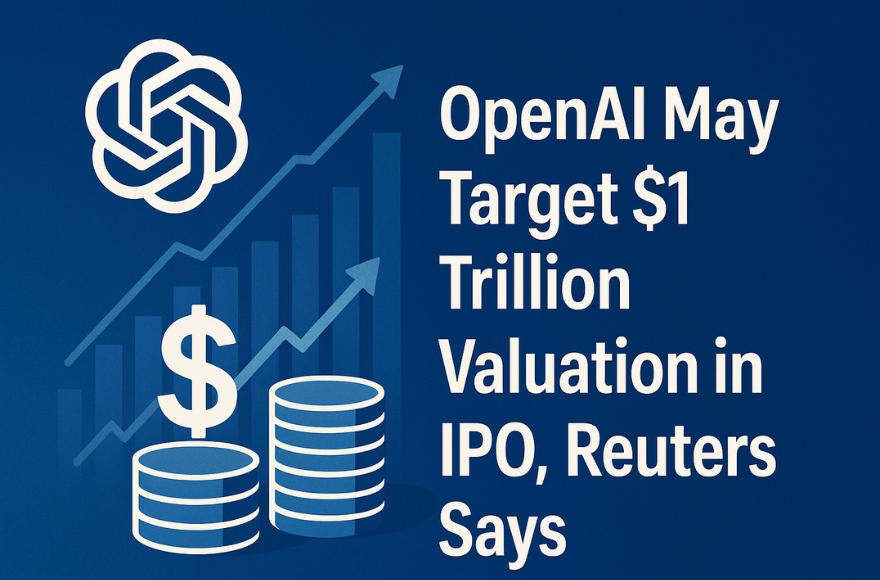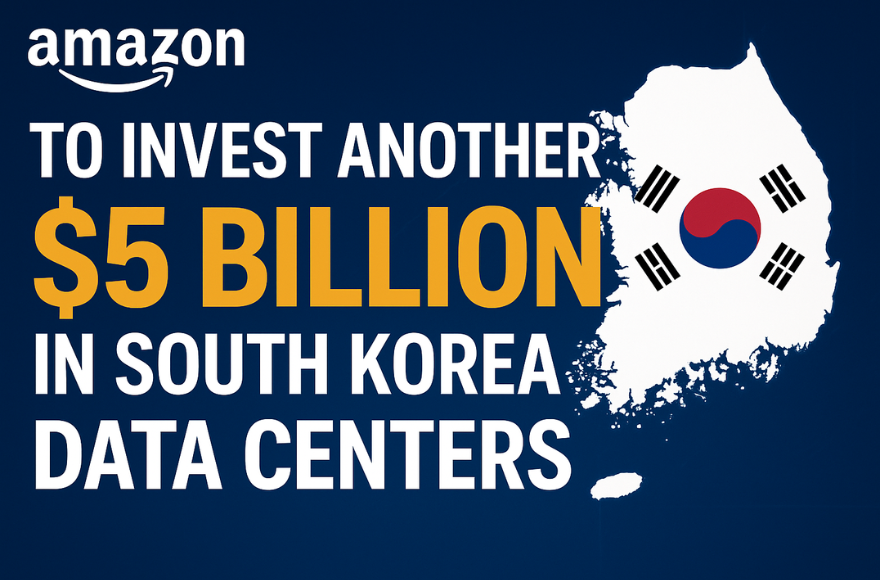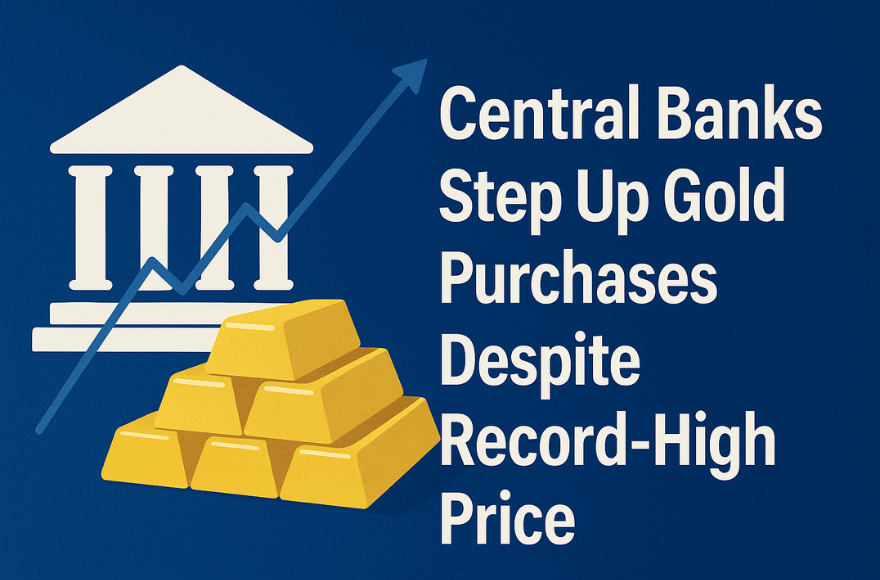
In the rapidly evolving world of artificial intelligence, one name keeps appearing in headlines and investor discussions: OpenAI. The company behind the viral chatbot ChatGPT is now exploring what could become one of the most anticipated public listings in tech history — its potential Initial Public Offering (IPO). Here’s a comprehensive look at the landscape of the OpenAI IPO, why its valuation could reach $1 trillion, and what it might mean for the broader AI company IPO 2026 wave.
When we talk about the OpenAI stock launch and the possibility of OpenAI going public, we’re not just talking about a typical tech firm stepping into the public markets. OpenAI has arguably re-written the rules of AI development, and now its public listing could mark a major inflection point for AI investing. Indeed, recent reports suggest that OpenAI may target a $1 trillion valuation when it goes public.
To put that into perspective: if the OpenAI valuation 2025 reaches such heights, it would place it among the most valuable companies ever at IPO. For investors, that raises the question: is this one of the best AI IPO opportunities? Quite possibly.
OpenAI started in 2015 as a non-profit research outfit. Over time it evolved, creating a for-profit arm to raise capital and scale its AI ambitions. To pave the way for a public listing, the company restructured into a hybrid model where a nonprofit parent retains oversight while the operating business functions like a conventional corporation.
These structural moves are key because they signal that OpenAI is positioning itself to be “IPO-ready,” or at least more so than before. As the CFO noted, “A PBC gets us to an IPO-able event … if and when we want to.”
The idea of OpenAI targeting a $1 trillion valuation might sound audacious, but there are several logic points behind it:
OpenAI has ballooned in relevance and usage thanks to ChatGPT and related AI tools, placing it at the heart of the generative-AI boom.
The scale of capital required to build out next-gen AI infrastructure (data-centres, compute, models) is enormous, so the potential size of the business is massive.
Market participants are already treating OpenAI as among the most-valuable private companies. In October 2025 a secondary share sale valued the company at around $500 billion.
A public listing (the OpenAI initial public offering) would allow the company to raise capital, allow liquidity for early investors and employees, and position itself to compete with the largest tech players globally.
Given these dynamics, a $1 trillion target isn’t out of the question — though it’s certainly ambitious and contingent on execution, market conditions and timing.
There’s no official confirmation yet of the IPO date. According to recent reporting, OpenAI is laying groundwork for an offering possibly in the second half of 2026. Some insiders suggest 2027, but many believe 2026 is the earliest realistic window. Hence the references to “AI company IPO 2026”.
Market timing will matter. As the CFO cautioned, you can show up ready to go, and if the market isn’t ready, “you’re just out of luck.”
For potential investors, this means: monitoring how OpenAI’s business develops, how the macro and equity-markets fare, and how investor appetite for large tech IPOs evolves.
One of the pivotal relationships in this story is between OpenAI and another giant: Microsoft. Microsoft has been a major backer of OpenAI, including a substantial investment and strategic cloud-computing alignment.
In recent restructuring, Microsoft holds roughly 27 % of OpenAI after its $13 billion investment, and the nonprofit foundation behind OpenAI retains about 26 %.
Why does this matter? Because it signals how governance, capital and strategy will play out as OpenAI transitions toward going public. Investors look closely at who holds what, what influence they exert, and how aligned the incentives are.
If OpenAI is still private, how do investors get exposure? That’s where “pre-IPO shares” come into play. Many sophisticated investors and private-market participants look for shares of OpenAI before the public listing — either through venture rounds, secondary markets or special vehicles. Platforms like Forge note that the OpenAI IPO price does not yet exist because the company hasn’t filed yet.
For individual investors, getting in before the IPO can be appealing because of the potential upside — but it also carries risk. The window may be limited, less liquid, and the company’s public listing could change terms or valuations. These pre-IPO opportunities often become hotbed topics when discussing the best AI IPO opportunities.
Even as the potential is enormous, there are several caveats and risks:
Execution risk: Building and commercializing advanced AI models, deploying infrastructure, monetizing effectively are all non-trivial.
Market risk: Equity-markets fluctuate, investor sentiment toward large tech IPOs can shift, and macroeconomic conditions may tighten.
Governance and structure risk: OpenAI’s hybrid nonprofit/for-profit setup is unique. Some investors may find the structure less transparent or more complex than typical public companies.
Valuation risk: A target of $1 trillion means very high expectations built in. If growth falters or margins disappoint, the valuation could get challenged.
OpenAI’s potential IPO is not just about one company. It’s also a bellwether for the next generation of tech listings — especially in the AI domain. If OpenAI goes public successfully at a high valuation, it could unlock a wave of other AI-company IPOs in 2026 and beyond, making this moment one of the “best AI IPO opportunities” periods in recent memory.
Investors and the market will watch closely: will OpenAI’s listing serve as a launching pad for many more generative-AI companies? Will public markets embrace large-scale AI plays? The answers to those questions could shape tech investing for years to come.
If you’re keeping an eye on the OpenAI stock launch and want to prepare:
Follow the news: Track filings, announcements, recruitment, partnerships and capital-raises by OpenAI.
Monitor fundamentals: How fast is OpenAI growing revenue? How steep are its losses? What’s its path to profitability?
Watch the IPO window: Timing matters. If the offering comes in 2026, then market sentiment that year will matter.
Understand the structure: Be clear on who controls what, how the nonprofit/for-profit hybrid impacts governance, dilution and investor rights.
Consider alternatives: If direct participation in the IPO is hard, look at related exposure – infrastructure companies, AI chip makers, cloud providers etc.
Mind the risk-reward: With a valuation target of $1 trillion, the upside could be huge — but the downside risk of missing expectations is also real.
The OpenAI initial public offering is shaping up to be one of the marquee events of the decade — a true “AI company IPO 2026” scenario in the making. With OpenAI potentially targeting a $1 trillion valuation, the prospects of it going public represent a turning point for generative AI and public markets alike. With major backers like Microsoft and a unique structure built for scale, OpenAI appears many steps ahead — yet the path remains challenging and unpredictable.
For investors, staying informed and cautious will be key. Whether or not the final number hits $1 trillion, the journey of OpenAI’s stock launch may provide one of the best AI IPO opportunities in a generation. Keep an eye on the signals, stay ready, and understand both the promise and the perils of this unfolding story.

 Next
Next
OpenAI aiming for a $1 trillion valuation shows how powerful AI has become. Their technology like ChatGPT is changing industries. It’s amazing to see a company built on innovation reach this level. The IPO could make OpenAI one of the biggest names in tech history.
A $1 trillion target for OpenAI’s IPO is huge! It shows how valuable artificial intelligence has become. OpenAI’s tools are used worldwide, from education to business. If the IPO happens, it could inspire more companies to invest in AI and drive massive tech growth.
If OpenAI reaches a $1 trillion valuation, it will be a historic achievement. Their products already impact millions of users. This IPO could make them one of the most valuable companies ever and set a strong example for future innovation in artificial intelligence.
OpenAI’s rumored $1 trillion IPO goal shows how far AI companies can grow. With ChatGPT and other tools, they’ve created massive value. This move could motivate more AI startups to dream big and push the boundaries of what technology can achieve in the future.
Rajeev
Oct 30, 2025OpenAI reportedly planning to reach a $1 trillion valuation through an IPO is a huge milestone. In simple words, this means OpenAI could become one of the most valuable tech companies in the world — similar to Apple, Microsoft, or Google.